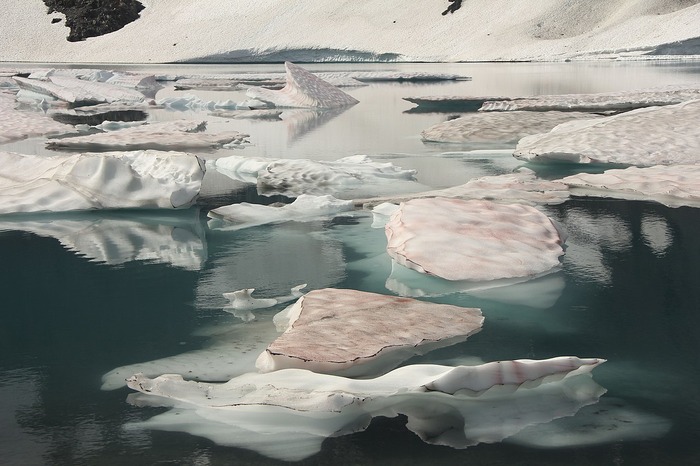Rapid glacier melt in Himalayas can affect water security of a quarter of the world’s population
Asia is experiencing more extreme weather events as it is warming nearly twice as fast than the global average, found a new report by the World Meteorological Organization (WMO). The warming trend between 1991–2024 was almost double that during the 1961–1990 period.
In India, warming led to prolonged and intense heatwaves last year, leading to more than 450 deaths, while unusually intense marine heatwaves were recorded in the northern Indian Ocean, according to the WMO’s State of the Climate in Asia 2024.
Marine heatwaves across seas and oceans in Asia were the worst on record, leading to coral bleaching, harmful algal blooms, fill kills, and flooding and heatwaves on land. The pace of warming for sea surface temperature in Asia is nearly double the global average, while sea level rise in the Pacific and Indian Ocean is also higher than the global average, according to the report.
India experienced extremes
Besides intense heatwaves both on land and water, extreme rainfall led to a lot of destruction as well. Major landslides in the Wayanad district of Kerala killed more than 350 people on July 30, 2024, following over 500 mm of rainfall in 48 hours, found the report.
It also reported that lightning strikes claimed the lives of 1300 people in India last year, with one deadly lightning event killing 72 people on 10 July across Uttar Pradesh, Madhya Pradesh, Maharashtra, Rajasthan, and Jharkhand. On the coastal zones, severe cyclonic storm Remal made landfall in West Bengal in May, while cyclonic storm Fengal made landfall in India in November.
Asia faces intense climate adversities
India’s northern neighbour Nepal also experienced extreme rainfall, especially a harrowing episode in late September where rainfall-induced flooding took the lives of 246 people, while causing damages worth $94 million, found the report. On the other hand, drought affected nearly 4.8 million people in China, damaged 335,200 hectares of crops, and caused losses worth $400 million.
West Asia also saw extreme rainfall, with the United Arab Emirates seeing 259.5 mm of rain in one day, one of the highest ever recorded since 1949. The report also found that severe snow melt and record-breaking rainfall in Central Asia led to the worst flooding in at least 70 years, leading to the evacuation of 118,000 people. The strongest storm of 2024, Cyclone Yagi, wreaked havoc across Vietnam, the Philippines, Lao PDR, Thailand, Myanmar, and China, found the report.
Another major concern is the rapid melting of glaciers, especially in the central Himalayas and Tian Shan, where 23 out of 24 glaciers lost ice mass, leading to an increase in glacial lake outburst floods and landslides. According to the report, ten of Asia’s largest rivers start in the Hindu Kush Himalayas, and together provide water for a quarter of the world’s population. Glacial melting threatens these water sources.
“The State of the Climate in Asia report highlights the changes in key climate indicators such as surface temperature, glacier mass and sea level, which will have major repercussions for societies, economies and ecosystems in the region. Extreme weather is already exacting an unacceptably high toll,” said WMO Secretary-General Celeste Saulo.
About The Author
You may also like
Air Pollution is Changing the Lightning Patterns in India, Study Finds
Can green trade barriers save the environment?
Temporary CO2 Removal Will Help Offset Methane Emissions: Report
Rise in Fossil Fuel Burning is Making Floods Lethal in Asia
Heatwaves Drove 9% of India’s Power Demand in the Summer of 2024

